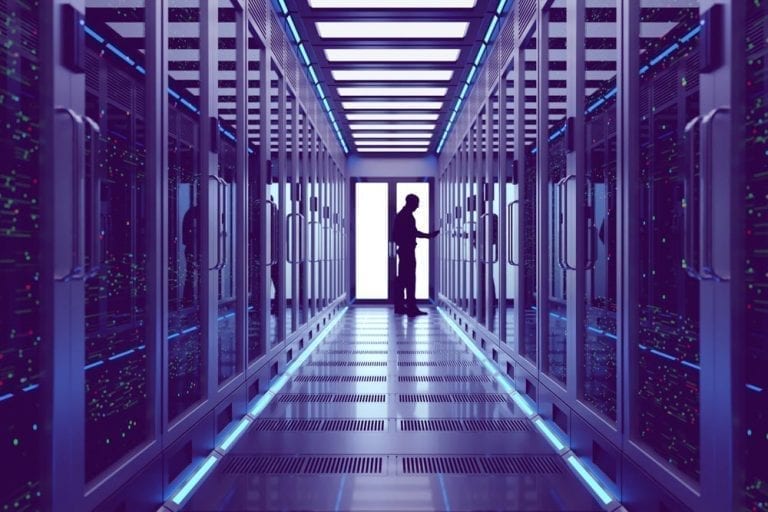
Mainframe History: How Mainframe Computers Have Changed Over the Years

Mainframes have one of the longest histories of any kind of computing technology that is still used today. In fact, mainframe history shows the fast-evolving landscape of technology, few innovations have left as profound a mark as mainframe computers. From their inception to the sophisticated systems of today, mainframes have continuously adapted to meet the ever-growing demands of business operations. Understanding the journey of early mainframe computers offers invaluable insights into the evolution of computing power and its impact on enterprise solutions.

The Birth of Mainframe Computers
Mainframe computer history dates back to the 1950s when IBM, among other pioneering tech companies, developed the first IBM computer mainframe. These early mainframes were colossal machines, filling entire rooms and marked by their substantial processing power. Initially designed to handle large-scale computations and data processing tasks, mainframes quickly became essential in industries requiring robust computing capabilities.
Very few of the computer scientists who worked on the first mainframes are still working with mainframes today. That makes mainframes different than virtually all other computing technologies that we use today.
For example, plenty of people who work as Windows and Linux server admins today can remember when Windows came out in the 1980s, or when System V was the hottest new technology in the Unix world. Most people who support cell phones remember when the first cell phones appeared. Data scientists who work with Hadoop or Spark can certainly remember when those platforms came out; they’re still quite new compared to mainframes.
But few of the people who work with mainframes today can recall when the first old mainframe computer came out.

The Rise of Enterprise Computing
By the 1960s and 1970s, old mainframe computer systems had become synonymous with enterprise computing. Organizations relied on the first mainframe to process vast amounts of critical business data with unparalleled reliability and security. During this era, mainframes evolved to incorporate advanced features such as batch processing, enabling automation of routine tasks and significant operational efficiencies.
The 1980s marked a turning point for the mainframe era with rapid advancements in microprocessor design and storage capacity. These improvements significantly enhanced the performance and efficiency of mainframe system in OS tutorials point. IBM’s introduction of z/OS, its flagship mainframe operating system, further solidified mainframes as the backbone of mission-critical applications across industries.
Major developments in mainframe history include different types of mainframe computers:
- there are very few mainframe computers still in operation today. Developed starting in the 1930s, the machine was not ready for use until 1943. It weighed five tons, filled an entire room and cost about $200,000 to build – which is something like $3,070,500 in 2020 dollars. (Keep that in mind the next time you complain about the cost of your iPhone.)
- ENIAC –World War II sparked the creation of the next famous mainframe computer, the ENIAC. Although the ENIAC was not actually completed until a year after the war ended, it signaled the start of heavy government investment in mainframe development. The ENIAC remained in service for a decade.
- Magnetic storage – While early mainframes were based on vacuum tubes for storing data, a major innovation came to the mainframe world with the development of what was called core memory. In place of vacuum tubes, core memory stores information magnetically. Your magnetic 5400-RPM hard disk it was not, but core memory provided a faster and more reliable way to store and retrieve data than vacuum tubes. Core memory was first used in 1953 and soon replaced vacuum tubes entirely.
- COBOL– The programming language most closely associated with mainframes, COBOL, debuted all the way back in 1959 and remains in widespread use today. That makes COBOL one of the oldest continuously used programming languages. It beats even C, which originated in the early 1970s.
- Mainframe vendors– It’s worth noting some of the companies involved in early mainframe development. IBM is the name most closely associated with mainframes but, historically, the mainframe commercial ecosystem was more diverse. More than half-dozen companies – including Univac, General Electric, and RCA – also sold mainframes during the first few decades of mainframe computing.
- Linux for mainframes –Also worth noting is that, while mainframes for the first decades of their history ran on special mainframe operating systems, by the late 1990s this changed. Starting in 1998, IBM began developing a Linux-based operating system that could run on mainframes in place of mainframe-native systems.
Read our eBook
Best Practices for Mainframe Modernization
Read our eBook where we clarify the concepts of mainframe modernization, explain the drivers behind the common mainframe modernization patterns, and provide guidance on the most important methods and tools involved when putting those patterns into practice.
Modern Mainframe Systems
Today, the size of a mainframe computer is much smaller and more agile than they were decades ago. IBM mainframes are now about the size of a refrigerator. Modern mainframes don’t weigh more than a (very heavily packed) car.
They cost a lot less, too. Although old IBM mainframes still had price tags in the million-dollar range in the early 2000s, today you can pick one up for closer to $100,000.
Today, mainframe computer models have evolved to meet the challenges of cloud computing and big data analytics. While their physical footprint has decreased, modern mainframes boast unparalleled processing power and reliability. They support virtualization technologies that enable multiple operating systems and applications to run concurrently, making them ideal for managing large-scale data processing and real-time analytics.
Over the past half-century of mainframe history, the machines have evolved rapidly and remarkably. Modern mainframe computers are hardly the huge, crazily expensive, unwieldy machines of yore. They readily integrate legacy with modern technologies, allowing you to do things like run COBOL apps on z/OS alongside Docker containers on Linux (using z/VM) on the same physical machine.
And they remain powerhouses for number crunching and data analytics; in fact, IBM’s latest mainframes boast the most powerful processors in the world, with IBM z15 capable of processing up to 1 trillion web transactions per day and supporting 2.4 million Docker containers.
The evolution of computer mainframes reflects not only technological advancements but also their pivotal role in shaping the digital transformation of businesses. For B2B data software professionals, understanding the history and ongoing innovations of mainframes provides strategic insights into leveraging these powerful systems for scalable and reliable enterprise solutions.
Read our eBook: Best Practices for Mainframe Modernization where we clarify the concepts of mainframe modernization, explain the drivers behind the common mainframe modernization patterns, and provide guidance on the most important methods and tools involved when putting those patterns into practice.


